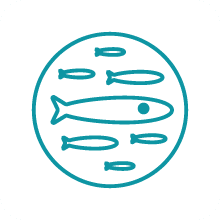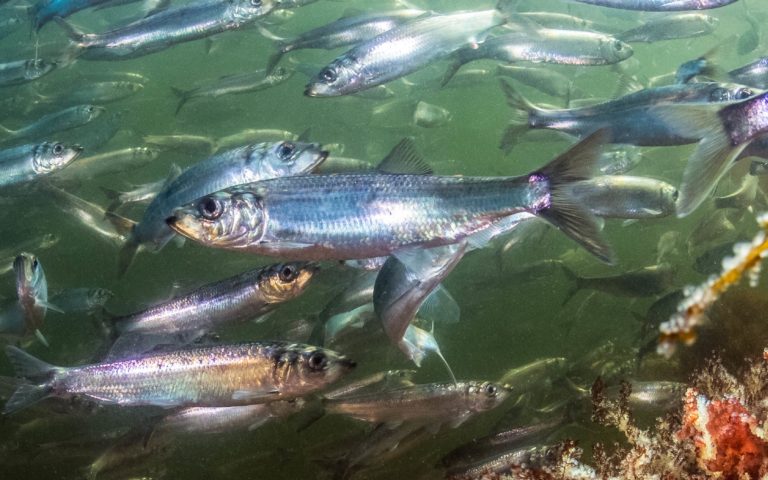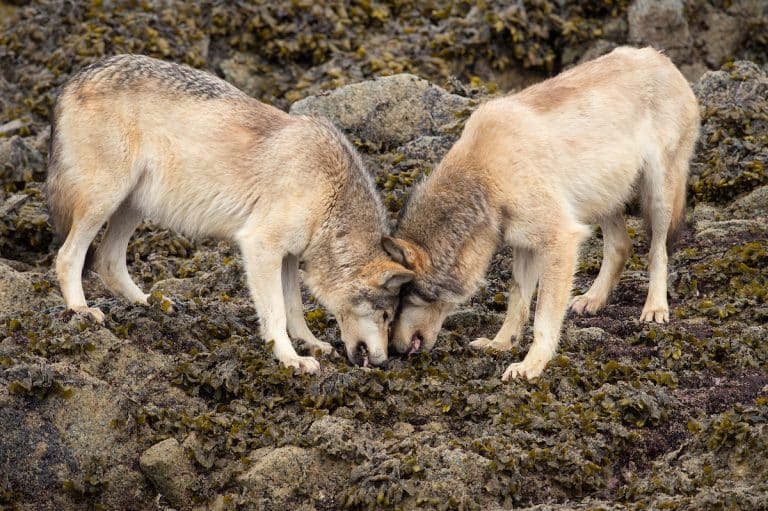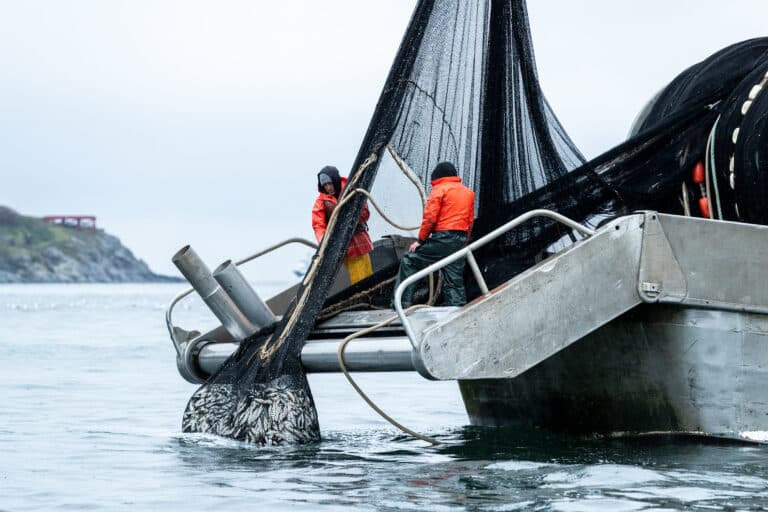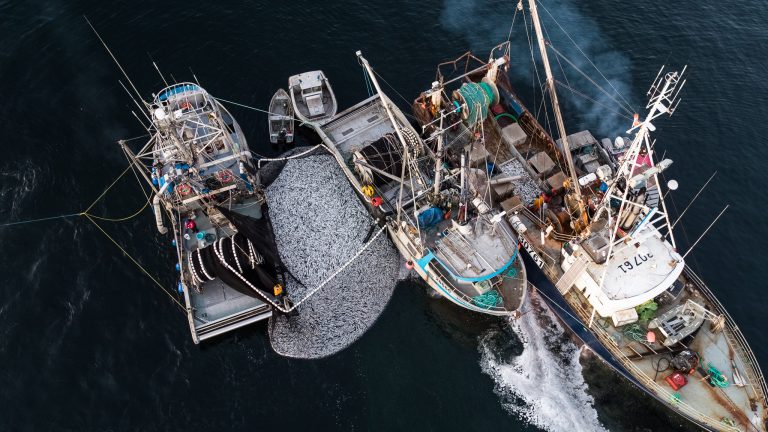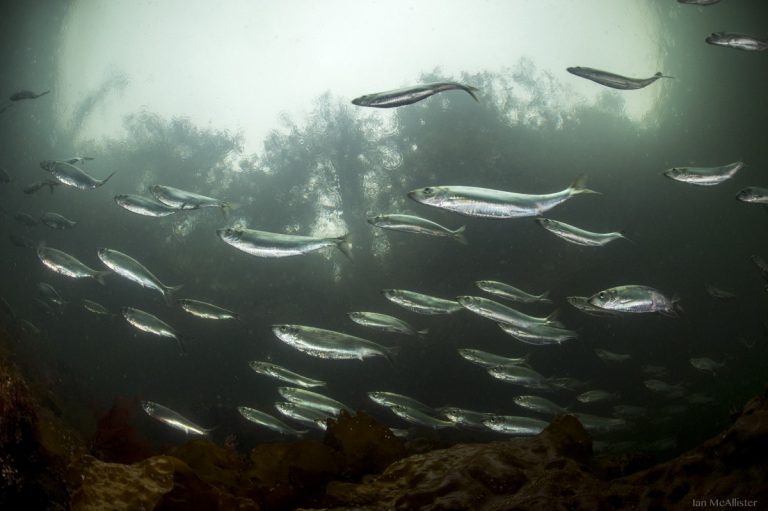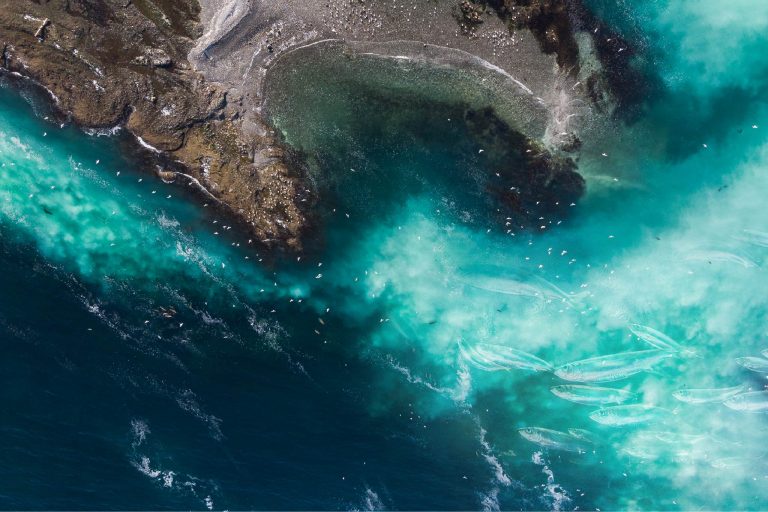Protect Pacific Herring
Herring is a cornerstone of marine biodiversity on the B.C. coast, however, a wasteful commercial sac roe fishery is threatening herring stocks and the sustainable First Nations spawn-on-kelp fishery that dates back thousands of years.
The Importance of Herring
Like the foundation of your house, Pacific herring (Clupea pallasii) form the foundation on which Canada’s Pacific coast is built. This small silver fish plays a major role in the lives of nearly every coastal species on land or underwater in British Columbia (B.C.). Like other forage fish, herring are an important link between tiny plankton and larger animals, from humans to whales, wolves, fish, and birds.
Each year, in early spring, the coastal waters of B.C. shine with silver as tonnes of herring migrate from offshore waters to nearshore bays and estuaries to spawn. Pacific herring spawns are short-lived but spectacular natural events. In the Great Bear Rainforest, millions of birds and thousands of sea lions and seals converge with humpback and gray whales to feed on herring and herring roe. Surf scoters and gray whales time their northward migrations perfectly to feast on the annual herring spawn. Even terrestrial animals such as bears and wolves rely on this annual feast, coming down to the tideline to eat herring eggs. Unlike Pacific salmon who spawn once and die, herring spawn on average five to seven times in their lifetime but may spawn up to nine times in their lives.
Herring were consistently abundant all along the B.C. coast for millennia. A 2014 archeology study of First Nations sites from Alaska, British Columbia, and Washington found herring were the first or second most abundant fish species at nearly all 171 sites, which dated back 10,000 years.
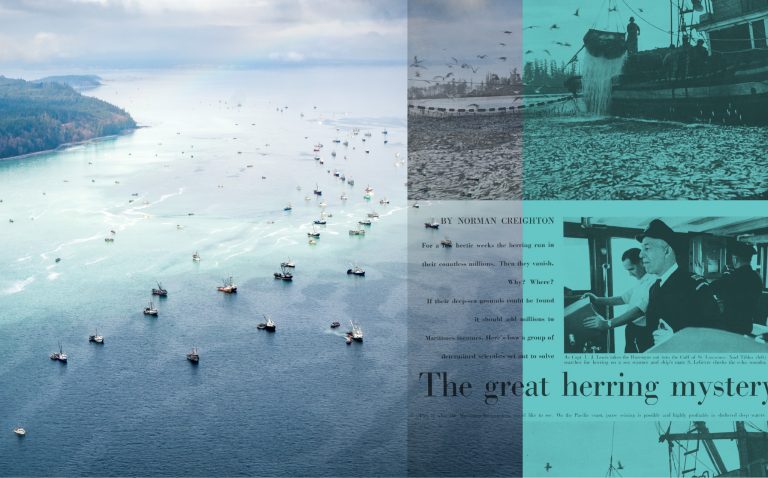
Read Now: “The Fighting Fish”
Pacific Wild’s new research paper provides evidence that government mismanagement is to blame for substantial Pacific herring decline.
The Issue
Herring populations on the central coast, and throughout B.C. waters, have declined precipitously over the past 100 years. The factors that affect herring populations are complex: water temperature, food availability, predator and competitor populations. However, many observers point to rampant commercial fisheries, which began harvesting herring en masse in the late 1800’s to make fertilizer and fish oil. In the 1960s, following decades of extremely high catches, herring populations crashed coastwide. After a short closure, commercial fisheries were reopened. Now, herring no longer spawn in many of their former spawning sites on the coast, and those who do, spawn in much smaller numbers. Four of the five major herring populations in B.C. have declined to historic low levels.
For decades, the Heiltsuk and other First Nations have been advocating for a sustainable fishery that would allow herring stocks to rebuild. However, Fisheries and Oceans Canada (DFO) continues to open the industrial “sac roe” fishery, even against the recommendations of its own scientists.
In 2016, after years of hard-fought battles and many more months of negotiation, the Heiltsuk Nation announced it had signed a Joint Management Plan with DFO for herring within their traditional territory. The Nation’s focus is now on managing the traditional fishery and pushing to improve and extend the collaborative planning process into the future. Many of our supporters raised their voices to support the Heiltsuk Nation during the 2015 conflict with DFO, which led to the joint management agreement for 2016. We thank you!
In 2019, Pacific Wild began working with local communities on Hornby and Denman islands to raise public awareness about the herring fishery in the Strait of Georgia. It is our ongoing goal to improve protection for herring in this important region.
In 2021/2022 DFO reduced the harvest rate of Pacific herring in the Strait of Georgia (SOG) from 20% to 10% after finding their long-time 20% harvest rate to be unsustainable. While this is a step in the right direction, it is not enough for recovery. Despite halving the total allowable catch from the year before, commercial landings of Pacific herring during the 2021/2022 season totaled only 3,407 tons, not fulfilling the allowed quota of 7,850 tons for non-Indigenous fisheries in the Strait of Georgia. This suggests that despite the fishing effort, there were insufficient amounts of fish to fulfill the quota. Pacific herring populations are still in a dire state and deserve the protection of a fisheries moratorium so that they may re-build instead of holding on by a delicate thread.
Across B.C., herring continues to be in a low-spawning, low-biomass (total weight and quantity) state. Put simply, their populations are failing to recover in a meaningful way. Spawning biomass (the total weight of the fish in a stock that are old enough to spawn) in the SOG sharply declined by 26% between 2020 and 2022. The 2021 productivity value of SOG herring was negative (meaning their total biomass declined post spawning, rather than increasing), representing the most negative production estimate since 1988 when estimates began. Looking ahead to 2023, spawning biomass in the SOG is projected to decline an additional 13% from 2022. While variations in spawning productivity is natural within herring populations, these declines are happening at a time when mortality pressures (such as predation and the effects of climate change) for herring are increasing exponentially. Natural mortality rates for herring have sharply increased in recent years, and are currently higher than at any time since the late 1960s.
First Nations Harvesting
Pacific herring is a forage fish widely considered to be a keystone or foundation species because of its huge productivity and wide interactions with a range of predators and prey. Preferring to spawn in sheltered bays and inlets, the adult herring begin making their way from the open ocean to the spawning grounds in the late winter. When the time comes to spawn, a single female may lay as many as 20,000 eggs, producing a staggering egg density of 6 million eggs per square metre.
First Nations have a long history of sustainably harvesting herring roe for trade and consumption. The traditional spawn-on-kelp (SOK) fishery involves the suspension of hemlock branches, kelp fronds, and seaweeds in sheltered spawning areas. Female herring lay eggs in multiple layers on the leaves. When harvesters collect the SOK, the adult fish are left to spawn again in the future. Such a method allows the spawning herring to live on and spawn again or be eaten by predators, therefore maintaining the herring’s critical ecosystem function. In contrast, the “sac roe” fishery, industrial seine and gillnet boats net schools of herring just before spawning. The roe, which is only 12% of the catch on average, is removed from the female fish for international export, mainly to Japan. Most of the carcasses from the male and female fish are processed into feed for Atlantic salmon raised in open net-pens, which jeopardize B.C.’s wild salmon populations.
Dive Deeper
Herring Articles, Stories & News
donate today and make a difference for pacific herring
Sources
Casavant, B. & Pacific Wild Alliance (2021). The fighting fish: A historical review of our relationship with pacific herring in British Columbia [policy white paper]. Victoria, B.C.: Pacific Wild.
Fisheries and Oceans Canada. (2016). Pacific herring [web log]. Ottawa, Canada: Government of Canada. Retrieved from: http://www.dfo-mpo.gc.ca/species-especes/profiles-profils/herring-hareng-eng.html
Fox, C.H., Paquet, P.C., Reimchen, T.E. (2015). Novel species interactions: American black bears respond to Pacific herring spawn. BMC Ecology, 15(14).
McKechnie, I., Lepofsky, D., Moss, M.L., Butler, V.L., Orchard, T.J., Coupland, G., Foster, F., Caldwell, M., & Lertzman, K. (2014). Archaeological data provide alternative hypotheses on Pacific herring (Clupea pallasii) distribution, abundance, and variability. Proceedings of the National Academy of Sciences, 111(9), 807-816
Pitcher, T.J. (2017, November 30). Herring Aid: can new ecosystem-based science save the herring? [Video file]. Hornby Island Herring School. Retrieved from https://youtu.be/7c09djpvFBw
Surma, S., Pakhomov, E.A., Pitcher, T.J. (2018). Energy-based ecosystem modelling illuminates the ecological role of Northeast Pacific herring. Marine Ecology Progress Series, 588, 147- 161.
